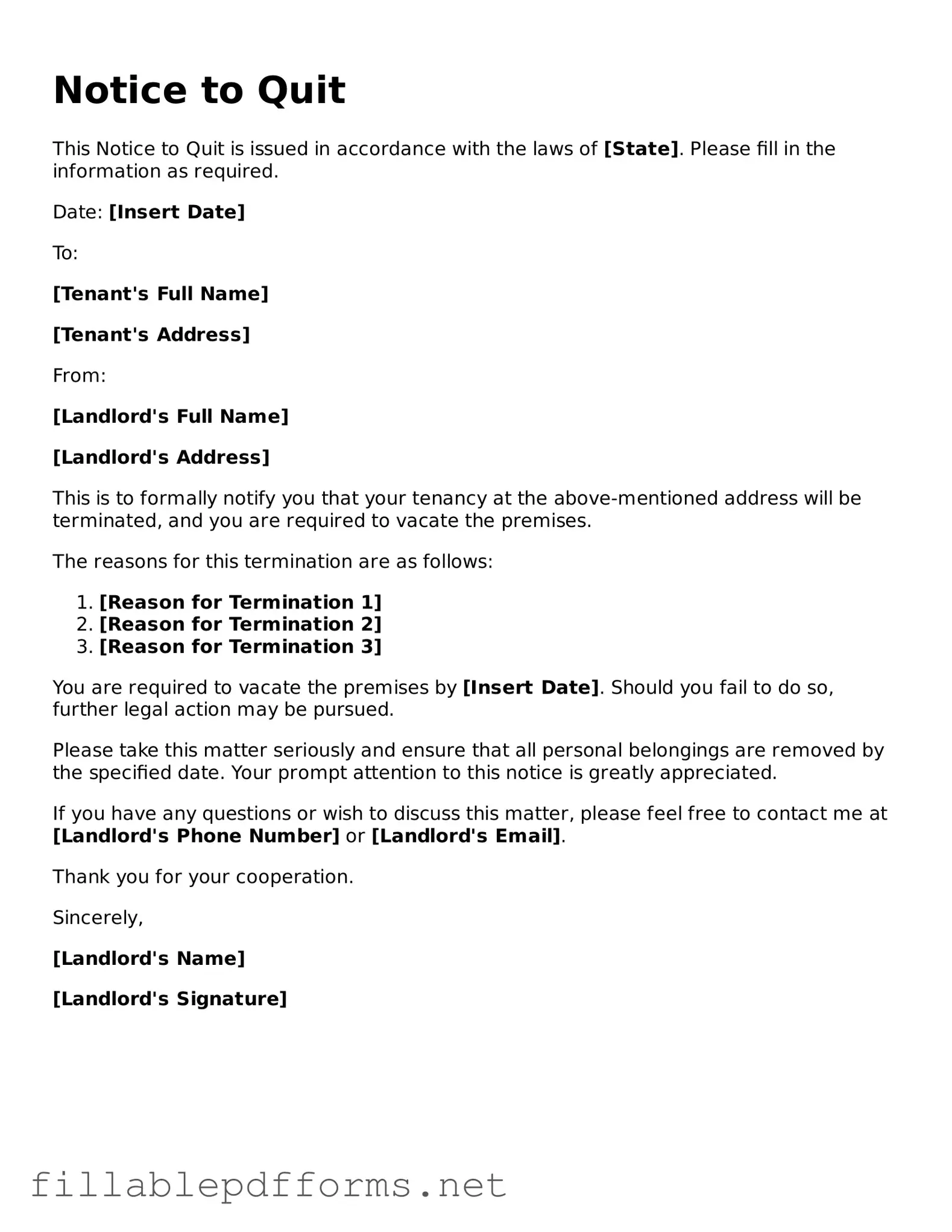- Misconception 1: The Notice to Quit is an eviction notice.
Many people believe that a Notice to Quit automatically means the tenant is being evicted. In reality, it is a formal request for the tenant to leave the property, often due to lease violations or non-payment of rent. Eviction is a separate legal process that follows this notice.
- Misconception 2: A Notice to Quit can be issued without cause.
Some think landlords can issue a Notice to Quit for any reason. However, most states require a valid reason, such as lease violations or failure to pay rent, to issue this notice legally.
- Misconception 3: Tenants have no rights after receiving a Notice to Quit.
Receiving a Notice to Quit does not strip tenants of their rights. They can respond, negotiate, or contest the notice in court if they believe it is unjust.
- Misconception 4: The Notice to Quit must be delivered in person.
While personal delivery is one method, many jurisdictions allow notices to be sent by mail or posted on the property. Check local laws for specific requirements.
- Misconception 5: A Notice to Quit is the final step in the eviction process.
It’s just the beginning. After a Notice to Quit, landlords may need to file for eviction in court if the tenant does not comply. Legal proceedings can take time.
- Misconception 6: All Notices to Quit are the same.
Notices can vary significantly based on state laws and the specific circumstances. Each notice should be tailored to the situation at hand.
- Misconception 7: A Notice to Quit is only for non-payment of rent.
While non-payment is a common reason, Notices to Quit can also be issued for lease violations, property damage, or other breaches of the rental agreement.
- Misconception 8: Tenants can ignore a Notice to Quit.
Ignoring the notice can lead to legal consequences. It’s important for tenants to take it seriously and respond appropriately.
- Misconception 9: A Notice to Quit guarantees a landlord will win in court.
A Notice to Quit is not a guarantee of victory in an eviction case. Courts will consider the evidence and circumstances before making a decision.
